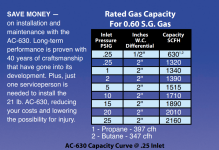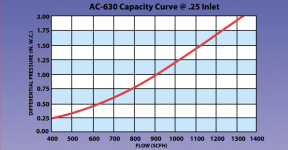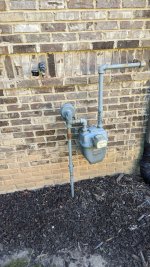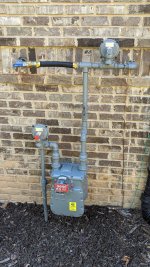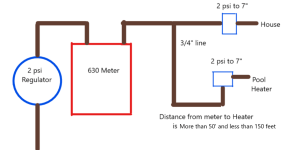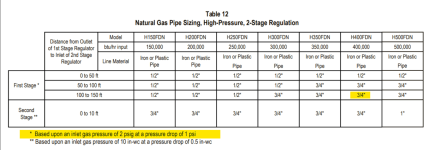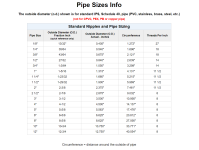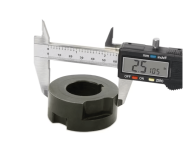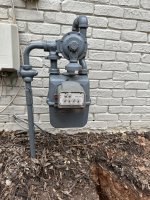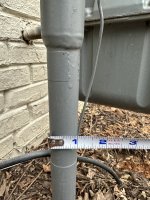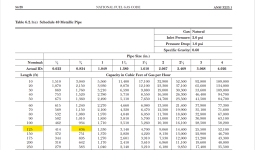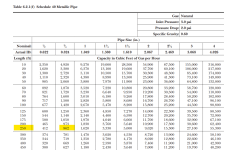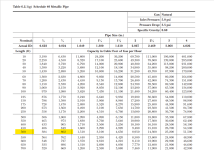Yes, that determines the meter size.Is it just the total required load for all gas appliances in the home?
The meter is the same for either pressure.
The 425 class meter will be rated in the 425 (0.5" w.c pressure drop) to 583 CFH (1.0" w.c pressure drop) range.
The 425 class can be used up to about 898 SCFH if you allow for a 2" pressure drop.
If you go over 425 CFH, you can increase the regulator to 8" or 9" w.c before the meter to account for the higher pressure drop.
The 630 class meter will be rated in the 630 (0.5" w.c pressure drop) to 900 CFH (1.0" w.c pressure drop) range.
If you go over 630 CFH, you can increase the regulator to 8" w.c before the meter to account for the higher pressure drop.
If your load is over 900 CFH (900,000 btu/hr), you can move up to an 800 class or a 1,000 class meter.
I suspect that a 630 class meter will probably be sufficient unless you have a lot of gas load appliances.
The regulator before the meter determines the gas pressure.
You can do a 2 psi or 7" system.
The main difference is the size of the gas line going to the heater and if you need 2 more regulators.
The gas plumber needs to add up all gas loads and tell you which meter that you need based on the total load.
The gas plumber needs to decide if they want to use 2 psi or 7".
Last edited:


